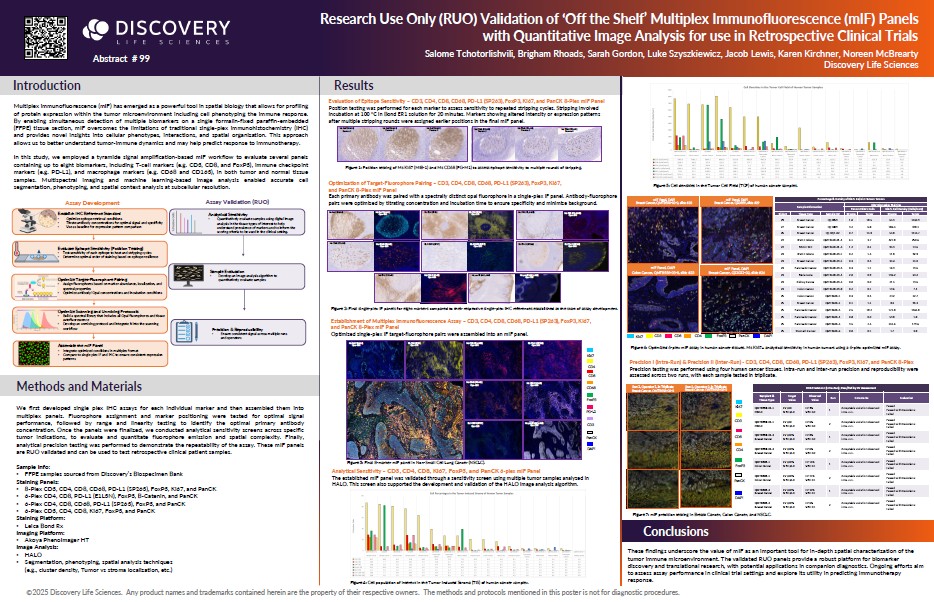Multiplex immunofluorescence (mIF) has emerged as a powerful tool in spatial biology that allows for profiling of protein expression within the tumor microenvironment including cell phenotyping the immune response. By enabling simultaneous detection of multiple biomarkers on a single formalin-fixed paraffin-embedded (FFPE) tissue section, mIF overcomes the limitations of traditional single-plex immunohistochemistry (IHC) and provides novel insights into cellular phenotypes, interactions, and spatial organization. This approach allows us to better understand tumor-immune dynamics and may help predict response to immunotherapy.

